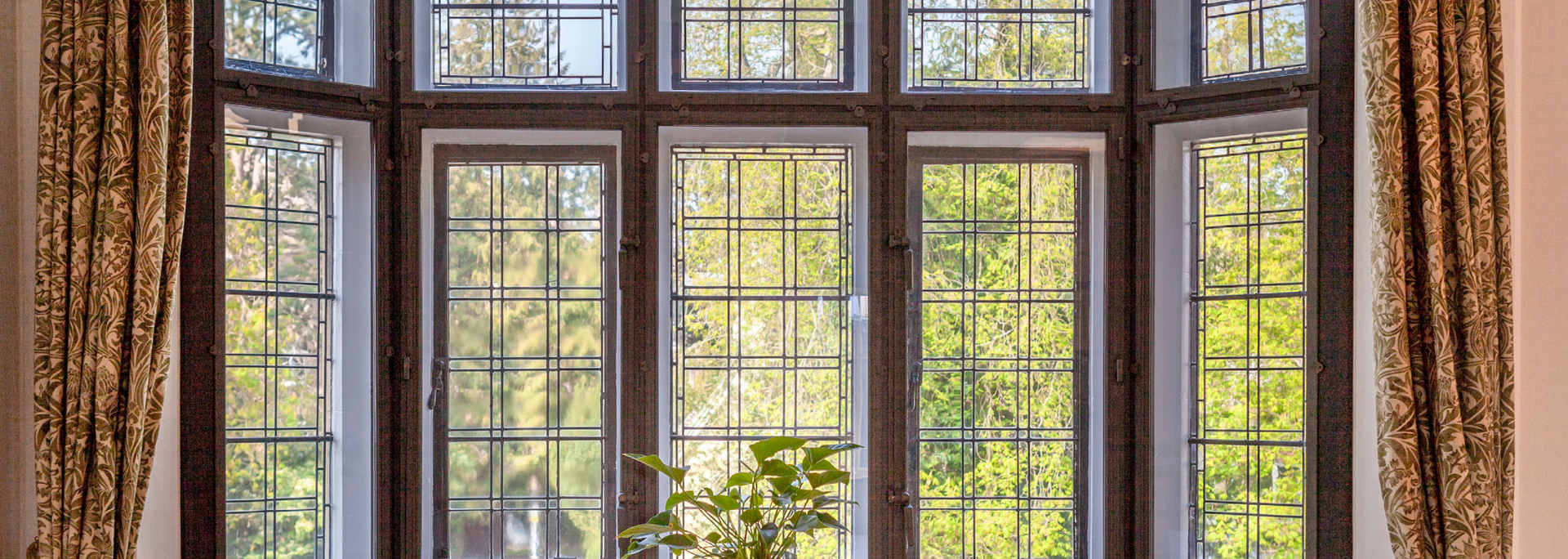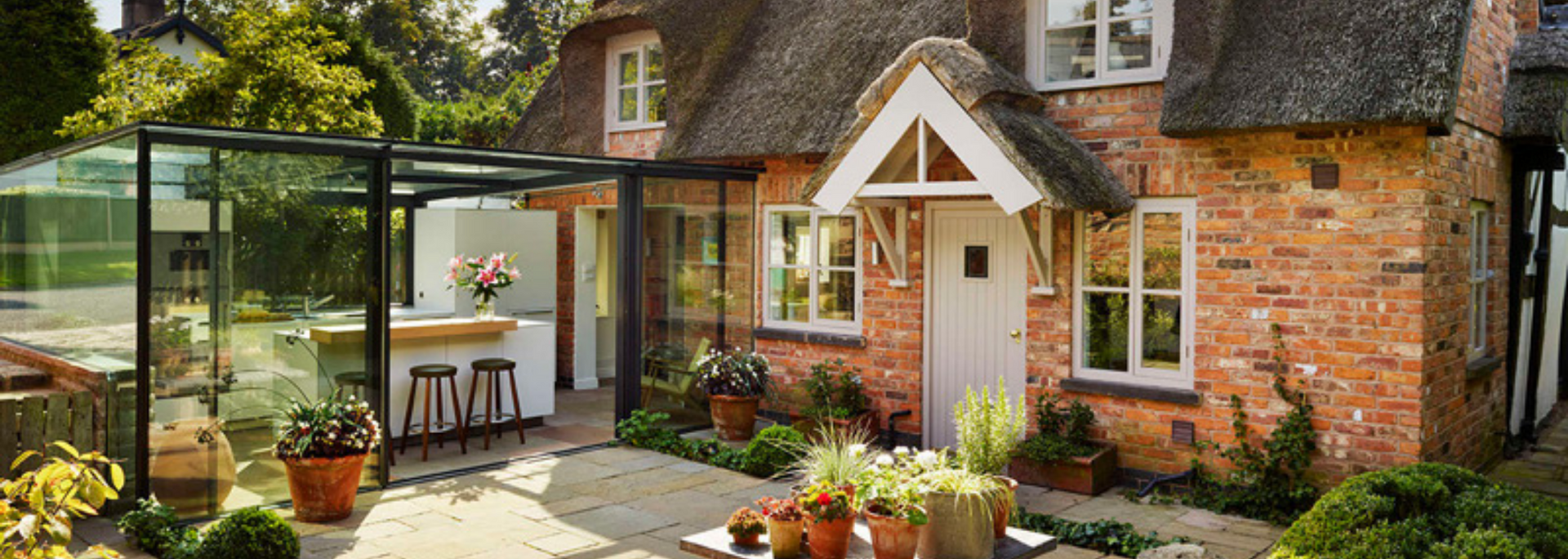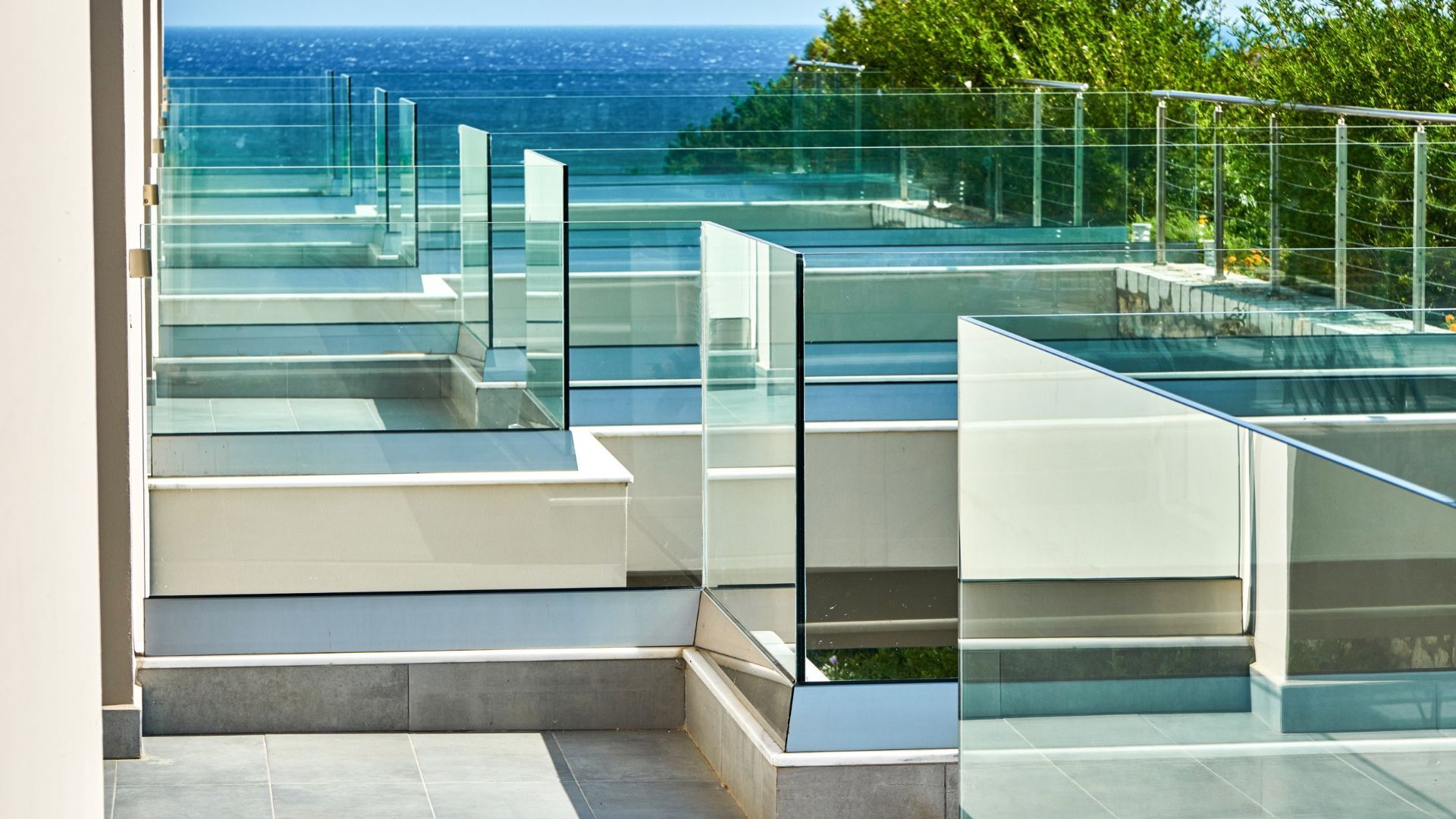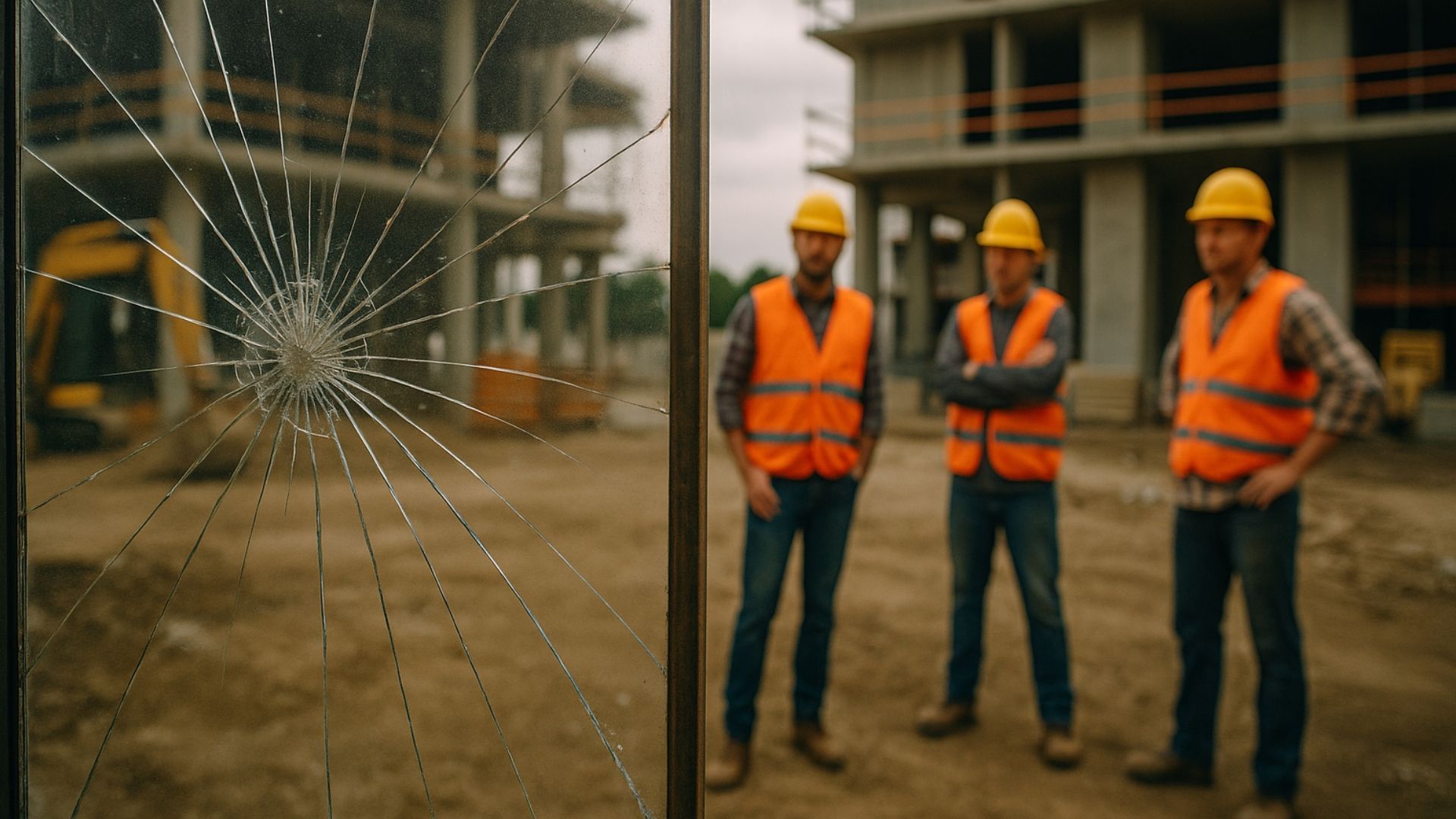Glass in listed buildings: regulations and considerations
Share this blog:
Do you need consent to replace glass in listed buildings? What about double glazing? Join us as we explore the regulations and pitfalls you need to know.

A listed building is any building included on the National Heritage List.
If a building is listed, it means it's recognised for being of special historical or architectural interest. And that means there are special planning controls in place that limit how these buildings can be amended or repaired.
This is a good thing. If historic buildings weren't assigned listed status, we'd risk losing their special character – or, worse, losing the buildings entirely.
However, these extra controls can be confusing for those living in or working on listed buildings.
Do you need special permission to build a shed? Or replace a door? Or repair a single roof tile?
Here at ToughGlaze, we supply glass to building contractors and architects throughout the UK – many of whom work on historic and listed buildings.
So, while we can't help you with sheds or doors or tiles, we can answer some of the most common questions related to glass and glazing in listed buildings.
But first, let's clear up the difference between planning permission and consent.
Planning permission versus listed building consent
As you'll no doubt be aware, any major change to a building requires planning permission from the local authority.
The key phrase here is "major change". Planning permission is required for considerable alterations like extensions and large summerhouses – but you'd never need permission to change something as simple as a window.
This is where listed buildings differ. If you want to make any changes to a listed building that "affect its character as a building of special architectural or historic interest" (Historic England), you'll need to seek listed building consent (LBC).
And yes, this could be something as simple as changing or replacing a window.
To apply for LBC, you should first contact the conservation officer at your local council. They can advise you on whether consent will be required for the work you're planning.
If consent is required, you'll have to fill in an application form and send it to the council.
It's important to note that planning permission and listed building consent are not mutually exclusive. Large alterations are likely to require both.
Do you need listed building consent to replace windows?
In most cases, yes.
Unless a window replacement is "like-for-like", you will need listed building consent to install it.
But like-for-like replacements are usually difficult to obtain. Many listed buildings are centuries old – and old-fashioned windows are quite unlike their modern counterparts. Not only do they use different (and often unique) frames, but the glass itself is thinner than today's glazing.
Even if you can source a like-for-like replacement window, it's best to check its suitability with your local authority anyway. After all, it's better to be safe than sorry.
Do you need listed building consent to repair windows?
Possibly.
Small repairs may fall under the category of
de minimis – or, in Plain English "unimportant".
However, you should check this with your local authority to be sure. While formal consent might not be needed, the council may want to produce a written agreement that lays out the details of each repair.
Obviously, this is something of a hassle if repairs are frequent or ongoing.
To avoid repeated requests, you could choose to formalise the process with a Listed Building Heritage Partnership Agreement.
Introduced in the
Enterprise and Regulatory Reform Act 2015, these agreements allow councils to provide long-lasting LBCs for routine maintenance work – provided that the work doesn't change the character of the building.
Can listed buildings have double glazing?
It's possible. But "possible" doesn't mean "easy".
Older buildings, including the vast majority of listed buildings, were invariably fitted with single glazing. Double glazing didn't become the de facto standard in the UK until the 1980s.
Modern double glazing – even if it's made to match the building's period character – is likely to be seen as an alteration too far by the local council. You'll need to obtain consent – and, depending on the age and Grade of your building, you may face challenges in obtaining it.
Another option is secondary glazing. This involves fixing another glass pane behind the original window. It has similar advantages to double glazing and – because it doesn't alter the character of the window – is more likely to be welcomed by planning authorities.

Take it from Historic England, the organisation responsible for England's listed buildings. It says:
"Secondary glazing when carefully designed and installed allows the original windows to be retained unaltered, and where necessary repaired, whilst reducing air leakage and conducted heat losses. As a result, there is no loss of historic fabric and in most cases, the installation is easily reversible."
What about glass extensions on listed buildings?
Glass extensions are likely to require listed building consent
and
planning permission.
But you might be surprised to learn that glass extensions are often
more
likely to see consent granted than their brick-and-mortar counterparts.
This is thanks to one of glass's most famous features: its transparency.
Brick-and-mortar extensions require careful matching of materials and construction methods. They need to match the look and character of their host building perfectly – and this is no mean feat.
Glass extensions, on the other hand, allow the building's natural character to shine through – quite literally.
Getting consent and planning permission might be a bit of a battle – but if you went with a traditional extension, you could expect an all-out war.
What glass is best for glass extensions?
If you're planning to add a glass extension to a listed building, we recommend low-iron structural glass with Fischer's secret-fix system.
Low-iron glass is frequently used for period properties because of its excellent optical clarity. It has very little of the green tint that sometimes affects other types of glass.

Fischer's secret-fix system, meanwhile, allows for robust frameless constructions with almost invisible fixings. And the more "invisible" you can make your extension, the better – at least in the eyes of planning authorities.
ToughGlaze has the exclusive licence to apply Fischer's secret-fix system in the UK. To learn more, visit our structural glazing page.
More frequently asked questions
What are the listed building Grades?
Historic England assigns three Grades to listed buildings. The higher the grade, the more difficult it will be to get permission to make changes.
- Grade I: the highest grade; applies to only 2.5% of listed buildings in England
- Grade II*: applies to buildings that are of special – but not exceptional – interest
- Grade II: the lowest and most common grade; applies to 92% of listed buildings
What is a Conservation Area?
There's one more thing can could affect your renovation plans: Conservation Areas.
You can think of Conservation Areas as being like listed neighbourhoods. The individual buildings may or may not be listed – but because the whole area is designated as being of historic or architectural interest, you may face additional planning controls.
To find out whether you can replace glazing in a conservation area, ask your local council about "article 4 directions". These list features, such as doors or windows, which have special protections in place.
How can I find out if my building is listed?
Historic England has a
free search tool that can help you find out if a building is listed. You should also refer to the organisation's
general guidelines.
ToughGlaze is one of the UK's leading suppliers of frameless structural glazing. Do you need high-quality, Kitemark-approved glass for a renovation project? Get in touch for a quick, competitive quote.









